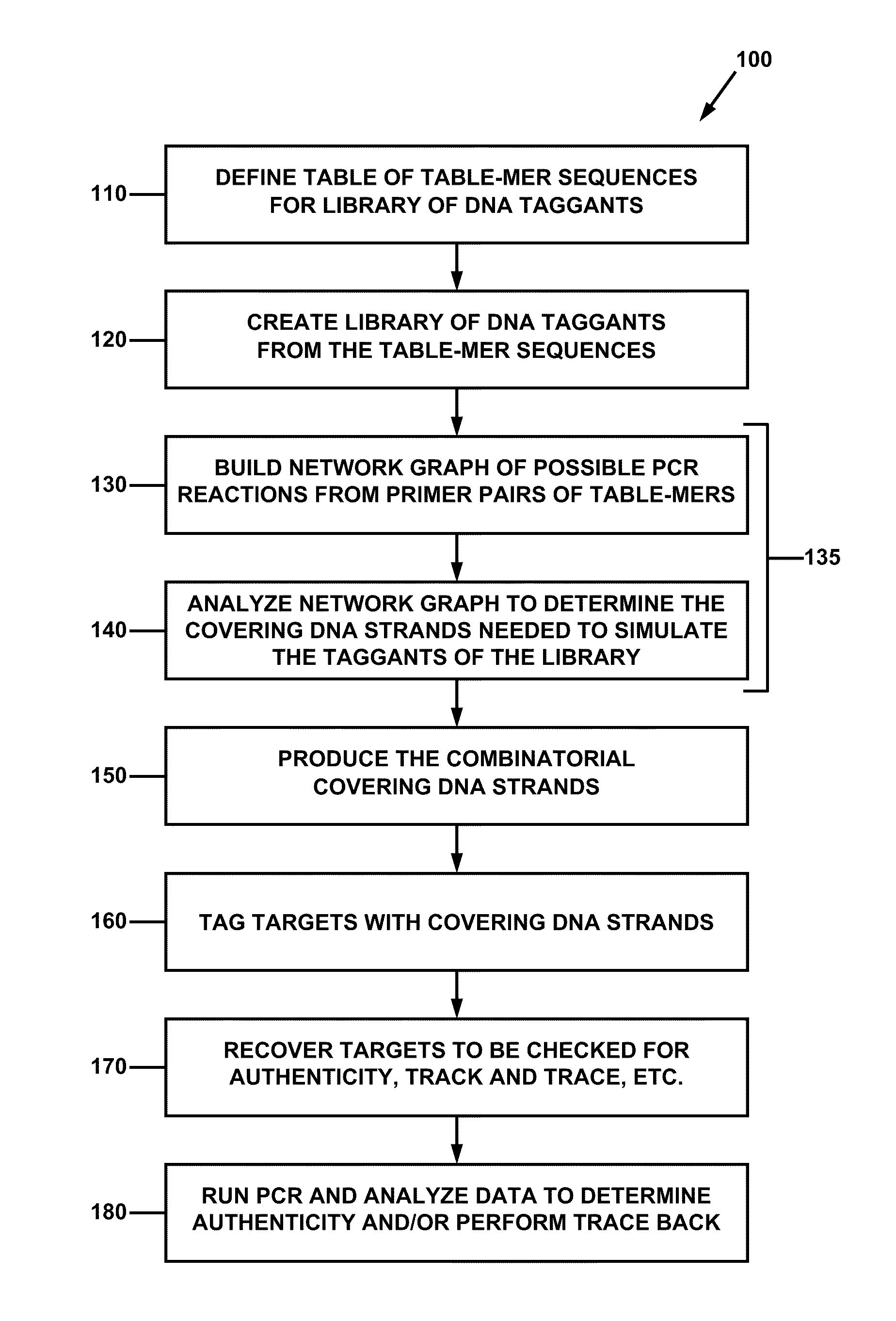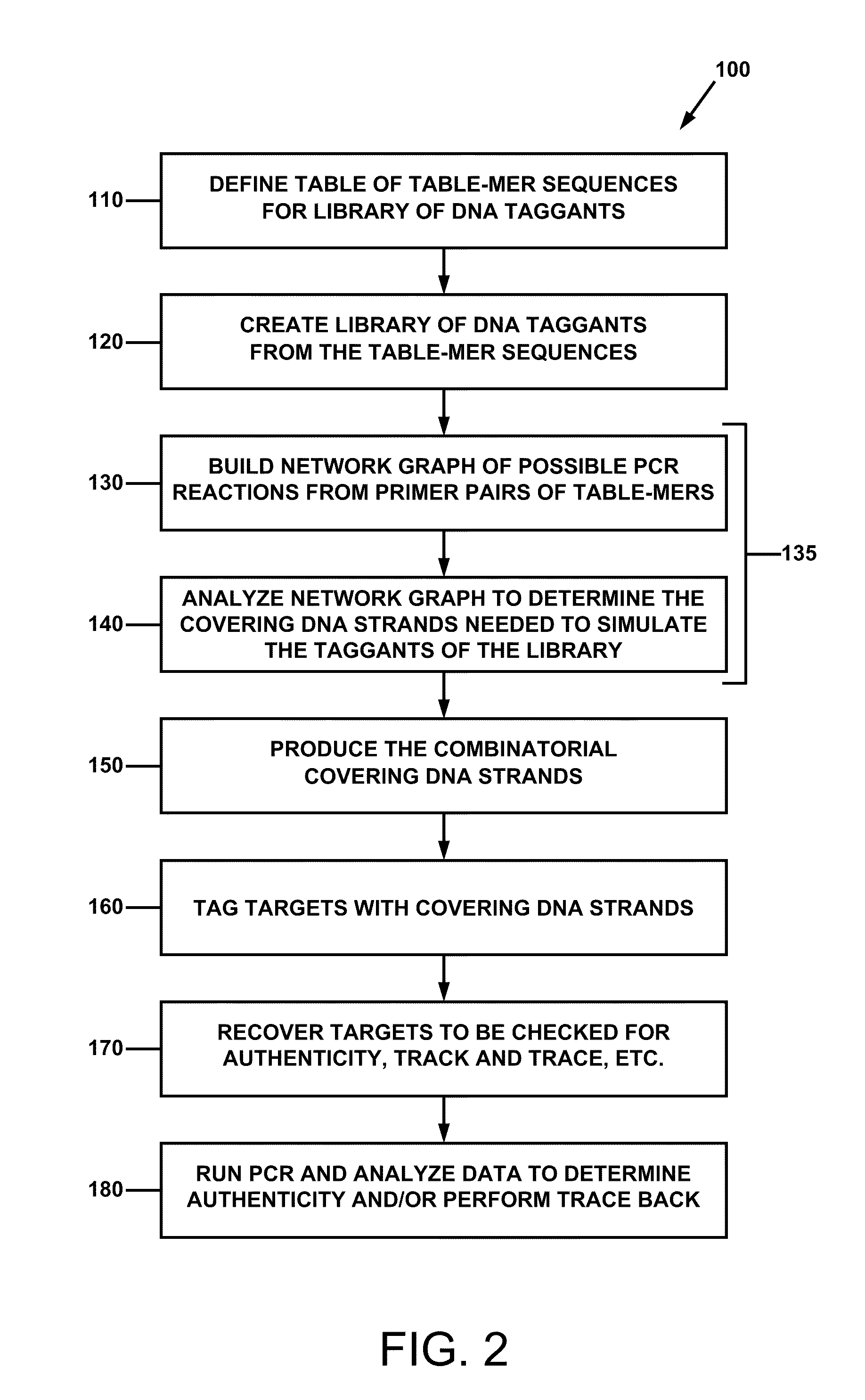Combinatorial DNA taggants and methods of preparation and use thereof
a technology of dna taggants and taggants, which is applied in the field of combinatorial dna taggants and methods of preparation and use thereof, can solve the problems of limited use of the taggant library of table 2, the inability to identify dna taggants by only initiating amplification at the end of the strand, and the counterfeiting of capsules, etc., to achieve the effect of enhancing the utility of existing overt taggants
- Summary
- Abstract
- Description
- Claims
- Application Information
AI Technical Summary
Benefits of technology
Problems solved by technology
Method used
Image
Examples
Embodiment Construction
[0061]For a general understanding of the present invention, reference is made to the drawings. In the drawings, like reference numerals have been used where needed to designate identical elements.
[0062]As used herein, certain terms are defined as follows:
NUCLEIC ACID: a deoxyribonucleotide or ribonucleotide polymer in either single- or double-stranded form. The nucleotides thereof may include the naturally occurring nucleotide bases adenine, thymine, guanine, cytosine, and uracil, as well as non-naturally occurring nucleotide bases such as those incorporating inosine bases, and derivatized nucleotides, such as 7-deaza-2′ deoxyguanosine, methyl- (or longer alkyl) phosphonate oligodeoxynucleotides, phosphorothioate oligodeoxynucleotides, and alpha-anomeric oligodeoxynucleotides.
TAGGANT: In general, a marker placed on, or associated with, an item or process.
DNA TAGGANT: A taggant made of deoxyribonucleic acid having a specific nucleotide sequence or a specific nucleotide composition.
OV...
PUM
| Property | Measurement | Unit |
|---|---|---|
| concentration | aaaaa | aaaaa |
| soluble | aaaaa | aaaaa |
| concentrations | aaaaa | aaaaa |
Abstract
Description
Claims
Application Information
 Login to View More
Login to View More - R&D
- Intellectual Property
- Life Sciences
- Materials
- Tech Scout
- Unparalleled Data Quality
- Higher Quality Content
- 60% Fewer Hallucinations
Browse by: Latest US Patents, China's latest patents, Technical Efficacy Thesaurus, Application Domain, Technology Topic, Popular Technical Reports.
© 2025 PatSnap. All rights reserved.Legal|Privacy policy|Modern Slavery Act Transparency Statement|Sitemap|About US| Contact US: help@patsnap.com



